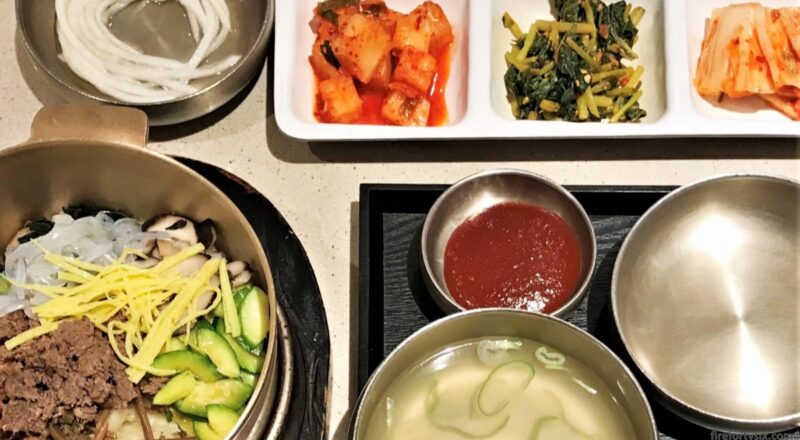One of the restaurants that we wanted to try, but didn’t get round to visiting during our previous trip was Hanilkwan (한일관).
They have several outlets in Seoul, including a centrally-located store in the basement of Ferrum Tower, a short walk from the Euljiro 1-ga subway station.
After entering the office building at 5pm, we were wandering cluelessly around the lobby until a helpful security guard ajusshi pointed us in the right direction.
Even after finding the restaurant, we were still a bit hesitant because it looked totally devoid of customers. There was also no one manning the cashier’s counter, where the entrance was situated.
We decided to put our faith in Naver Maps, which indicated that it was open everyday, continuously from 11.00am to 8.30pm, without any mid-day breaks.
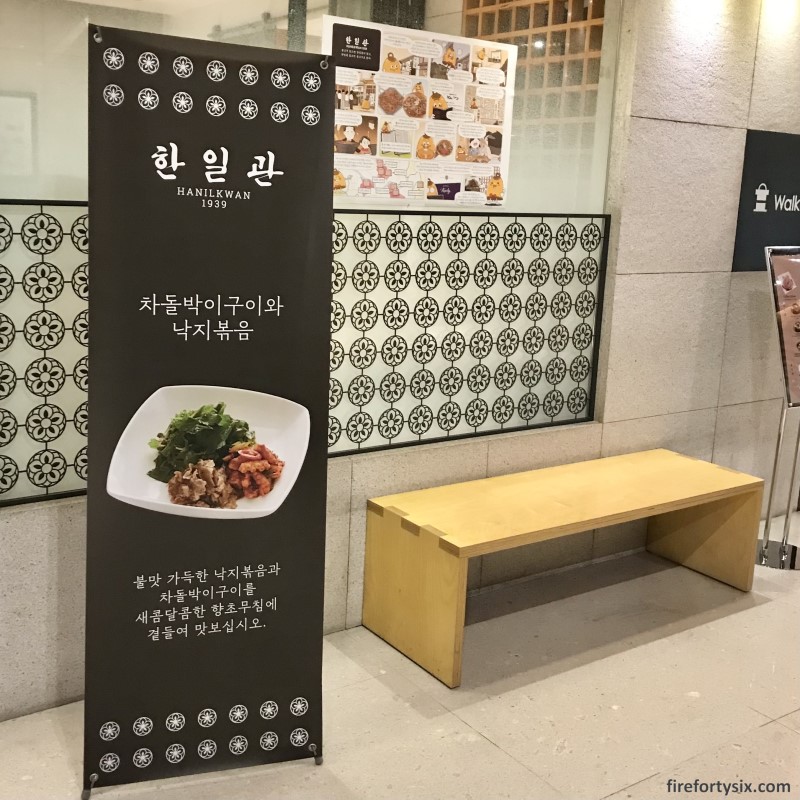
After waiting for a couple of minutes, we were rewarded for our patience when someone finally appeared, ushering us to our seats and handing us their menu.
We saw only a handful of staff shuffling around, and they were all preparing for the start of their dinner shift. I didn’t mind because it gave us time to Papago translate the completely Korean menu without any pressure.
The Wife was in the mood for some beef short ribs i.e. sogogi galbi, one of their signature dishes, and I chose the bibimbap.
Our waitress didn’t speak any English, so I did my best using the handful of Korean words I knew, with Papago’s real-time conversation translation filling in the gaps.
Heeding the advice of fellow travellers in Facebook and Reddit groups, I made sure to address her as unnie. Instead of ajumma that seems to be more commonly used in many Korean dramas.
The bibimbap was quick to assemble and didn’t require any cooking. It arrived quickly, together with various banchan and a dish of gochujang on the side.
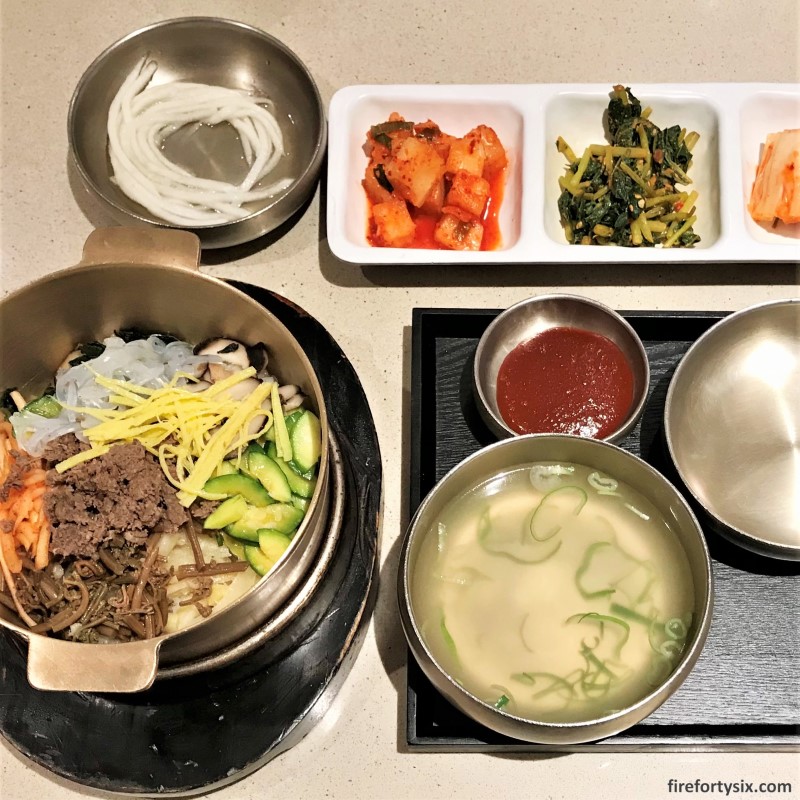
Bibimbap is a dish that requires audience participation, and it’s always fun to mix all the ingredients into a beautiful mess. Since I’m partial to spicy food, I tend to be quite heavy-handed when stirring in the gochujang.
It was decent, but nothing particularly extraordinary. In fact, I would say that the rustic versions made by the ajummas in Gwangjang Market are probably more interesting and tasty.

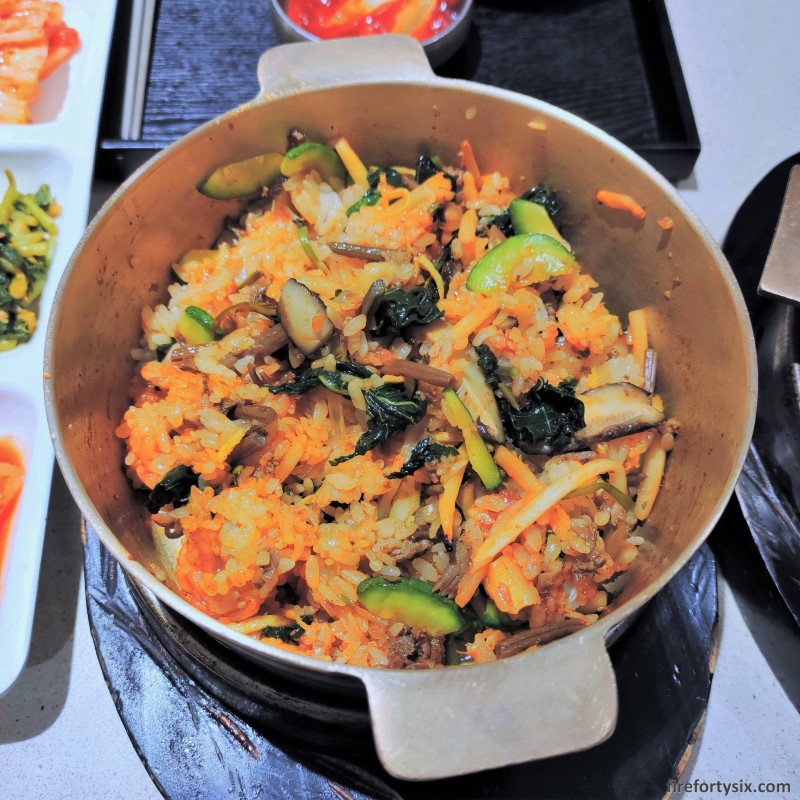
What was quite special though, was the deceptively simple cabbage and kkaennip (perilla leaves) salad, tossed in a light vinaigrette.
The shredded cabbage was crispy, juicy and provided a neutral-tasting foundation for the kkaennip to shine. This was our first experience having raw kkaennip and it introduced us to a totally new flavour dimension.
Being a close cousin to Japanese shiso, it wasn’t a completely unknown taste. But it was much more lively and exuberant, compared to the relatively demure shiso. If I had to break it down, I would say that it’s 60% shiso, 30% mint and 10% parsley.
That was the precise moment that The Wife’s kkaennip obsession started. From then on, for the rest of our trip, her eagle eyes would be on the lookout for kkaennip. Whenever they were served as part of our meal, she would always ask for refills and made sure that every last leaf was devoured.
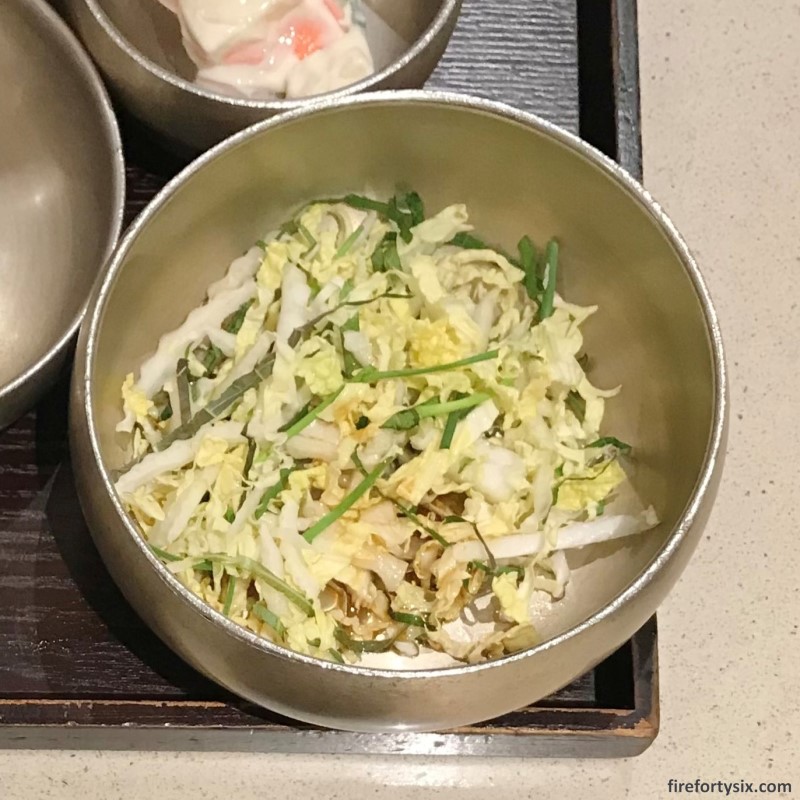
Our galbi took some time to prepare, and while we were waiting, office workers started streaming in. A middle aged man in a fancy-looking suit sat down on our right and ordered without even looking at the menu.
His dish of cold noodles arrived in double quick time, and he slurped it down while simultaneously speed reading a document. When he was done, he ordered a different noodle dish, which was also promptly demolished. And then he just got up and left.
It was the textbook demonstration of “eating to live”.
By then, our galbi had arrived. It was cut up into generous bite-sized pieces and served sizzling hot in a copper pot. Equal parts sweet and savoury, it was tender with just the right amount of chewiness. It was American beef and not Korean hanwoo, but it was very good.

The lady on our right was also served the same dish, at almost the same time as we got ours. It was a bit strange as she had just sat down, and we didn’t see her place an order.
We did notice though, prior to taking her seat, she was busy shepherding a group of old men in dark suits into a private room and making arrangements with the restaurant staff. Maybe she had placed her own order then.
Similar to the previous man on our right, she had to multi-task while having her dinner. A notebook was open and she was hurriedly scribbling stuff while taking quick bites. She did slow down halfway through and took time to enjoy the galbi; her face showing visible signs of satisfaction.
Life as a Korean executive sure is hectic.
Towards the end of our meal, our waitress served us a cold drink. Through the magic of Papago, she told us that it was maesil cha (매실차), translated as plum tea.
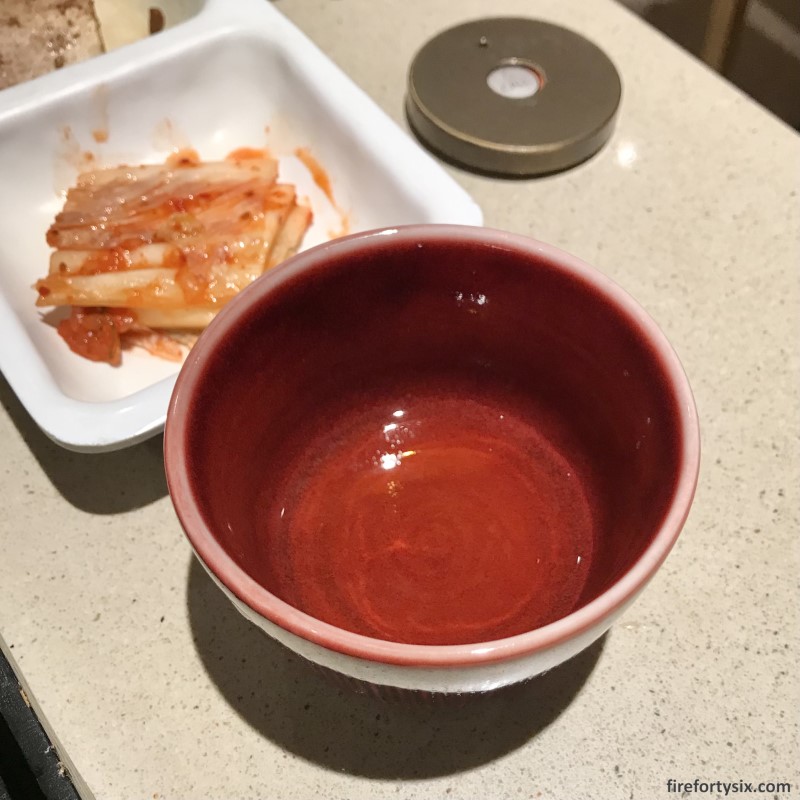
She added, with a smile: “If you need, I’ll give you more.” I think my earlier reference to her as unnie may have helped somewhat.
The maesil cha was sweet, tangy and very refreshing, perfect as a palate cleanser after the heavy meatiness of the galbi. We took her up on her nice offer, and got refills of the liquid dessert.
More and more people started coming in, including many groups of salarymen. When we initially entered to an empty restaurant, I thought it was an unpopular place. But it turned out to be the exact opposite, and we were simply just too early.
When we left, we saw several panels of cartoons that we didn’t notice earlier. It told the history of Hanilkwan, starting from 1939 when they opened their first store inside a shabby hanok house in Jongno 3-ga.
Followed by the tumultuous Korean War, which saw their restaurant in Seoul being destroyed, forcing them to open another one down south in Busan.
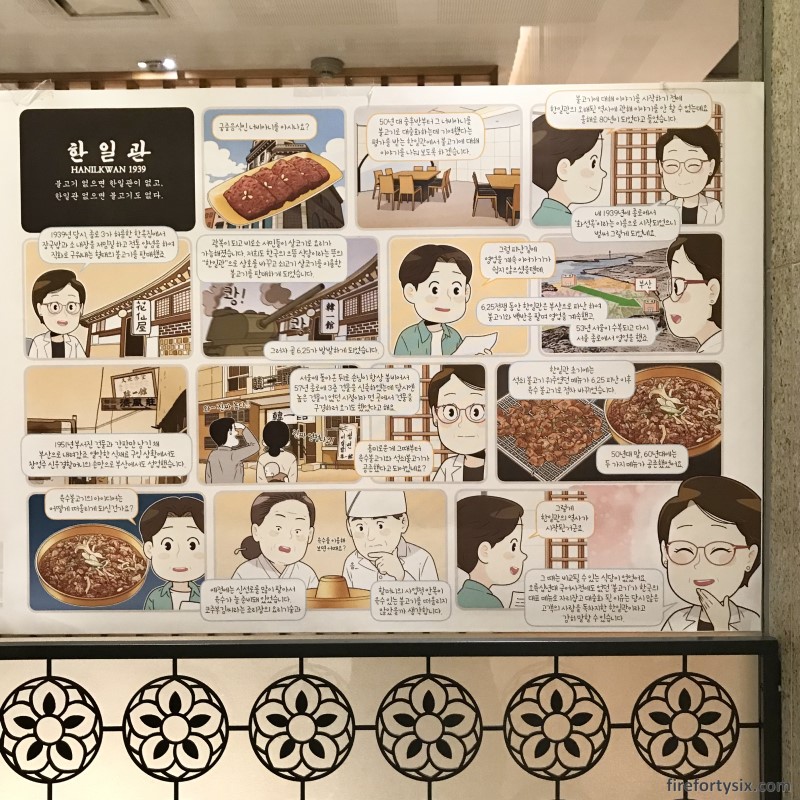


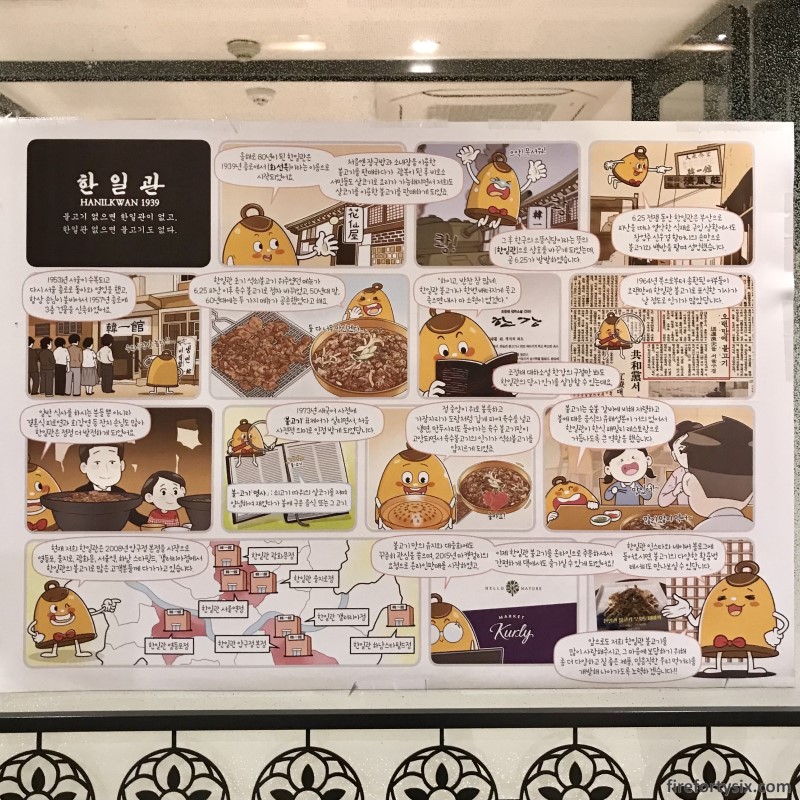
They finally managed to return to Seoul and popularised “broth bulgogi”, the version that’s commonplace nowadays. Before that, apparently the grilled version was more mainstream.
Business has grown from strength-to-strength since then. Numerous branches are open all across Seoul, with the tagline:
“If there is no bulgogi, there is no Hanilkwan; and if there is no Hanilkwan, there is no bulgogi”
I guess I should have paid more attention before entering the restaurant. Instead of the bibimbap, I could have ordered their signature bulgogi.
The morale of the story? Cartoons are important, always read them in detail.
Well, there’s always next time.
